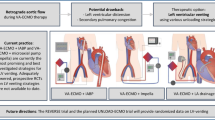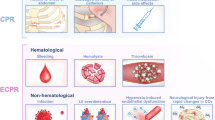Summary
BACKGROUND: Whether Off-pump coronary artery bypass (OPCAB) surgery is associated with a decline in perioperative morbidity and mortality still remains a matter of debate. This study evaluates the outcome of OPCAB surgery in the elderly. METHODS: All patients aged 75 and older who underwent CABG from 1998 to 2001 were examined retrospectively. Student's t-test and the chi-square test were used. RESULTS: 377 CABG patients were considered: 93 (off-pump) without and 284 (CPB) with extracorporeal circulation support. Mean age for OPCAB and CPB groups was 78.6 versus 77.5 years; EuroSCORE, 7.4 versus 7.3; number of distal anastomoses per patient, 1.6 versus 2.5 (P < 0.001), operation time, 138 versus 179 minutes (P < 0.001). Postoperative complications included renal failure 8.6% versus 16.2%, acute myocardial infarction 1.2% versus 3.9% and cerebral events 0% versus 1.8%; no significant differences were observed. The number of infused packed cells was 2.5 versus 3.9 (P < 0.001). Length of intubation and ICU stay were similar in both groups. Hospital mortality was 4.3% versus 4.2%. CONCLUSIONS: OPCAB is not associated with a reduction of perioperative morbidity and mortality in patients aged 75 and older.
Zusammenfassung
GRUNDLAGEN: Ob sich durch die "Off-pump coronary artery bypass"-(OPCAB-)Chirurgie die perioperative Morbidität und Mortalität senken lässt, ist noch immer eine kontrovers geführte Diskussion. Die vorliegende Studie vergleicht die Ergebnisse von älteren Patienten, die mit oder ohne Herz-Lungen-Maschine (HLM) operiert wurden. METHODIK: Von 1998 bis 2001 wurden alle Bypass-Patienten, die 75 Jahre und älter waren, retrospektiv aufgearbeitet. Der Student-t-Test und Chi-Quadrat-Test wurden verwendet. ERGEBNISSE: 377 Bypass-Patienten wurden aufgenommen: 93 wurden ohne HLM, 284 (CPB) dagegen mit HLM operiert. Das mittlere Alter für die OPCAB- und die CPB-Gruppe lag bei 78,6 bzw. 77,5 Jahren, der EuroSCORE bei 7,4 bzw. 7,3; die Zahl distaler Anastomosen pro Patient bei 1,6 bzw. 2,5 (P < 0,001) und die Operationszeit bei 138 bzw. 179 Minuten (P < 0,001). Als postoperative Komplikationen traten ein Nierenversagen in 8,6 % bzw. 16,2 %, ein akuter Myokardinfarkt in 1,2 % bzw. 3,9 % und zentralneurologische Ereignisse in 0 % bzw. 1,8 % auf; ein statistisch signifikanter Unterschied konnte nicht nachgewiesen werden. Die Zahl der transfundierten Blutkonserven lag bei 2,5 bzw. 3,9 (P < 0,001). Die Intubationszeit sowie der Aufenthalt auf der Intensivstation waren in beiden Gruppen gleich. Die Krankenhaus-Mortalität lag bei 4,3 % bzw. 4,2 %. SCHLUSSFOLGERUNGEN: Im untersuchten Patientenkollektiv (>74 Jahre) konnte durch das OPCAB-Verfahren keine Reduktion der perioperativen Morbidität und Mortalität erzielt werden.
Similar content being viewed by others
Author information
Authors and Affiliations
Corresponding author
Rights and permissions
About this article
Cite this article
Fritz, M.K.H., Wiebalck, A., Khargi, K. et al. Does off-pump coronary artery bypass surgery reduce morbidity and mortality in high-risk patients?. Eur Surg 36, 363–367 (2004). https://doi.org/10.1007/s10353-004-0090-7
Received:
Accepted:
Issue Date:
DOI: https://doi.org/10.1007/s10353-004-0090-7




